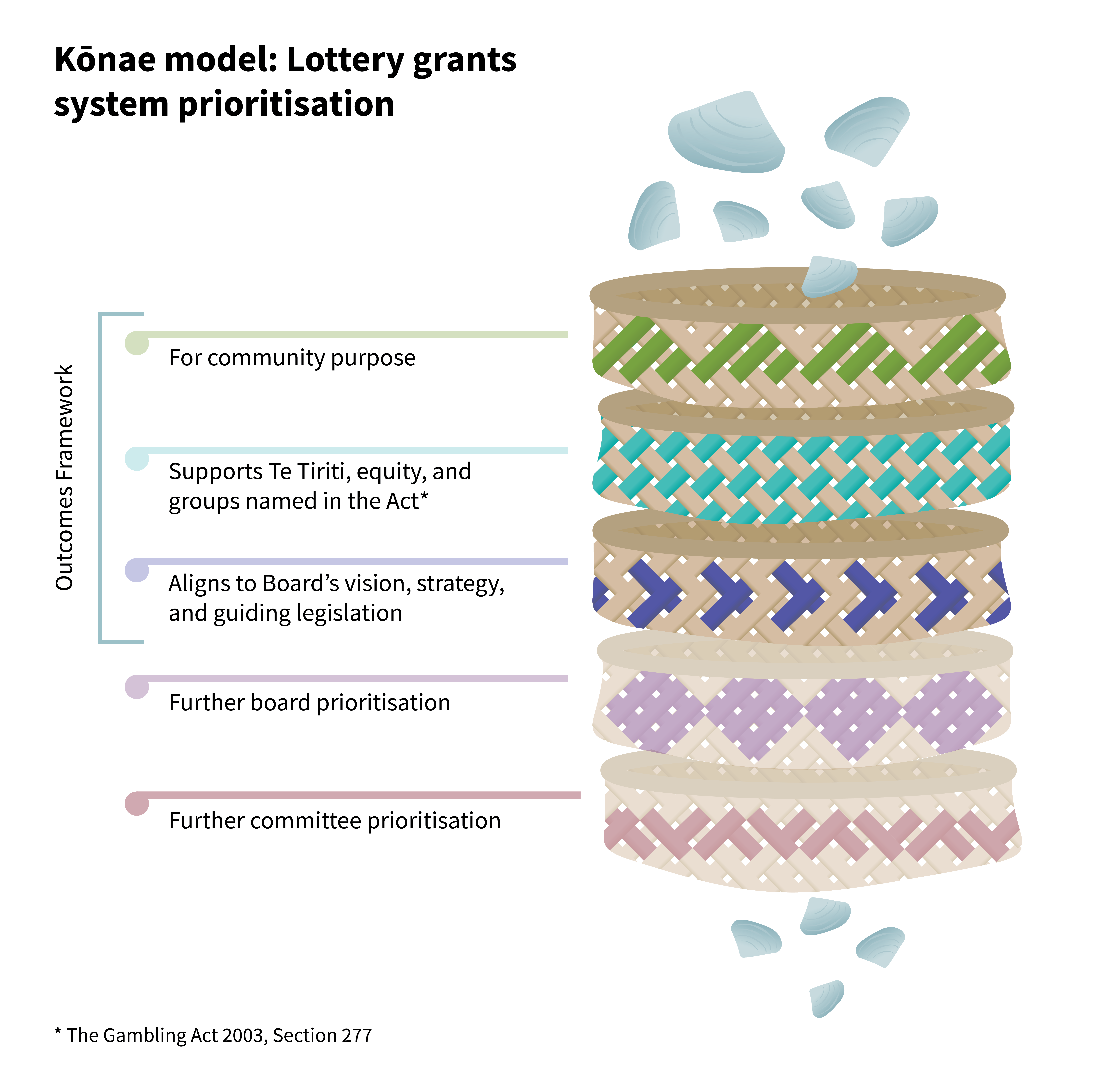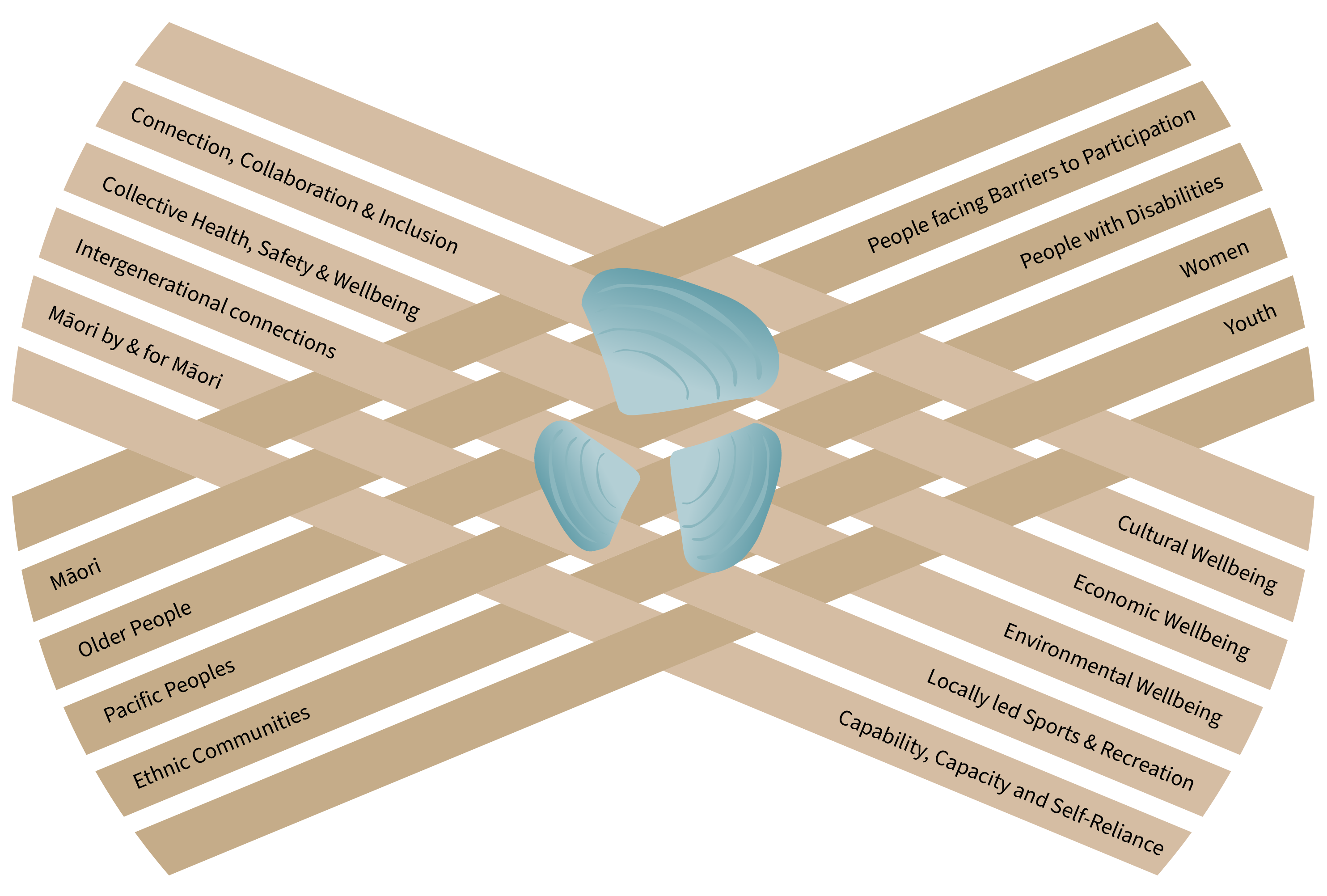Return to 'Lottery Outcomes Framework'
Lottery decision makers must consider many factors when making lottery grant decisions, so a decision tool is used to help decide which grants should be funded. The kōnae model explains how different layers of the Outcomes Framework assist lottery decision makers to prioritise grant applications.
A kōnae is a woven basket, traditionally used to collect pipi or other shellfish. The kōnae performs a filtering function, so that some shellfish stay in the basket and others do not.
To be prioritised, grants must:
- Be for community purposes
- Support equity, Te Tiriti, and the groups named in the Gambling Act 2003 (the Act).
- Align to the Lottery Grants Board Te Puna Tahua’s (the Board) strategy, vision and guiding legislation
- Consider the priorities set by the Board
- Consider the priorities set by distribution committees.
If a grant request meets the conditions at each kōnae layer, the lottery decision makers (committees) may choose to approve grant funding.

The diagram below shows a kōnae, or a woven basket, seen from above. This shows whenu, or strands, representing the nine Mid Horizon Outcomes Ngā Pae Tata, and the groups named in the Act. This image represents the lottery grants system prioritising these strands in grant making.

Priority outcomes
The Board sets overall priority outcomes for the lottery grants system. The Board also sets policies about what is not funded by lottery grants.
Lottery distribution committees use the Outcomes Framework to set their priority outcomes and to make funding decisions. Lottery decision makers must also have regard to the needs of Māori and other groups named in the Act. You can view the committee priority outcomes on each lottery fund’s page.
Composite index
Lottery distribution committees use a composite index to help guide their decision making.
The Lottery Composite Index provides a single score based on a combination of demographic and geographic information relevant to the Lottery Outcomes Framework, the community purposes which lottery grants must support, and to the groups named in the Gambling Act 2003 section 277 to inform their decisions.
The Lottery Composite Index is calculated using data drawn from the Integrated Data Infrastructure (IDI), managed by Stats NZ. Index scores provide information on the general level of community need within the area that will benefit from the grant requested.
The index scores are one of several sources of information which may be considered in making lottery grant decisions.
